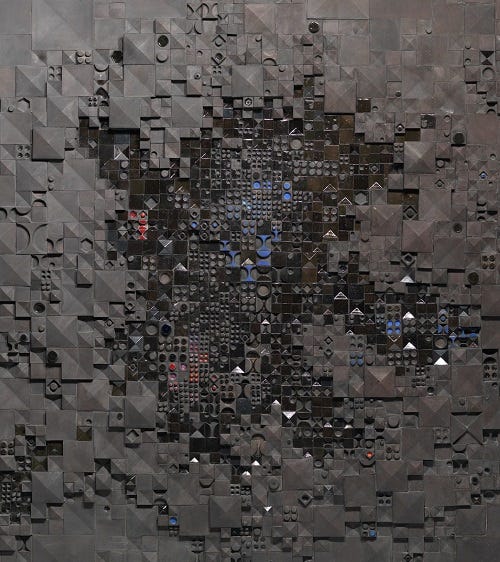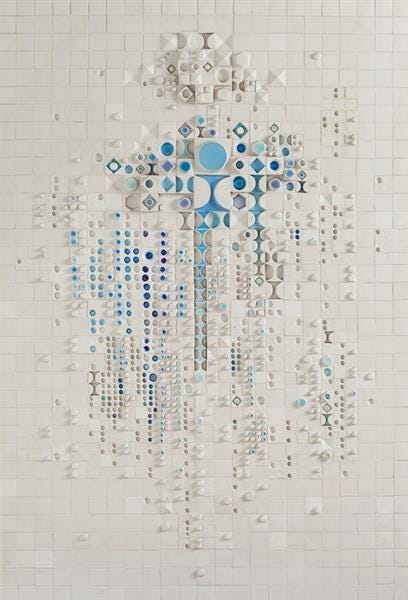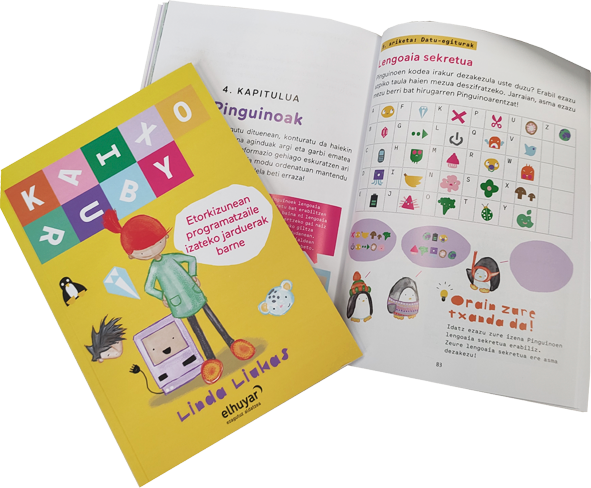No. 27 — Footnotes🦶Fall teaching ⬛ Rut Bryk
Seeing only the punctuation
My name is Linda. I write a bi-weekly newsletter about computer science, childhood and culture - and there are 9633 of you listening. If you enjoy this issue, please share it with anyone you think may find it useful.
The older I get, the more I enjoy seasons of work. Like come fall, I start teaching again and the leaves turn orange and it’s time to play my autumn anthem Höstvisa (lyrics by Tove Jansson) on a loop and all the other tropes of a season changing.
The course on Playful Computing doesn’t officially start until beginning of November, but I’m updating my teaching syllabus from last year and planting some new ideas.
(This course is only for students of faculty of educational sciences in Helsinki University, but I’d be interested in maybe (remote) teaching more. Send me a note if you work with teacher training universities!)
“You can read this book the way you might read E.M. Forster before taking a trip to Florence” says Wes Anderson of An Editor’s Burial: Journals and Journalism from the New Yorker and other magazines.
The book is a lovely collection of essays by real New Yorker reporters. It is meant to accompany the upcoming movie French Dispatch, where a foreign bureau of a fictional Kansas newspaper creates its final issue - inspired by the New Yorker of 1960s.
I of course can’t wait to see the movie. But what I’m most curious about is the phenomenon of this making of elaborate expanded universes. Is there a name for this?
I have a few examples:
The author Jenny Offill built a lovely page named Half a Library (from Samuel Johnson’s “A man will turn over half a library to make one book.") of the books that have shaped her writing.
Penny Lanne, the director of NUTS! created a footnote index of claims in the documentary. It is both intellectually rigorous and seriously playful.
And a bit more old school there is Bowie’s bookshelf, a collection of essays on the 100 books David Bowie was influenced by.
I don’t see these as mere appendices. I have come to think this kind of layering of notes and provenance as something Internet was made for. And if not Internet, the generation who grew up with it. I want footnotes, prior foundational texts, playlists, fanfics and a universe of ideas for everything I see.
The linear experience of reading a book or watching a movie feels squashed. On Internet we can always sleuth and search, follow an idea deeper. Any more examples to add my collection?
The images are artworks of Rut Bryk, a formidable Finnish ceramic artist. Her works, despite their organic nature always somehow make me think of computer hardware and circuitry. I wonder what her footnotes would have looked like?
Linked List
In computer science, a linked list is a linear collection of data elements whose order is not given by their physical placement in memory. But here it is a selection of things I’ve been reading lately.
Privatdozent is a newsletter that should interest many folks here: the sparkly, eccentric and highly human-centered history of physics, math and computers. There’s also a new biography on John von Neumann I’m about to start!
Tactile maps of Greenland combine my interest in tactile objects to think with and way-finding. I love how soft the wood becomes through touch.
Seeing only the punctuation. A simple, beautiful tool that removes everything else outside of punctuation on a piece of text. The outputs look like punchcards with a ton of personality. The original piece also compares the punctuation style of different authors.
Classroom
I’m hoping to surface and share stories from all of you and I’d love to see your creations! Here are a few educators and parents using Ruby in creative, fun and inspiring ways.
I had a lovely discussion with Antonio Santiago from KideScience on storytelling, shapes of stories, learning through our fingertips. It’s 37 minutes and I at least had fun recording.
There is a Basque version of Hello Ruby out! I haven’t yet seen it myself, but looks fun and you can get the book here. Kaixo Ruby!



This map template is so good makes me think I should make a similar resource myself too!
An oldie from Japan, but I love the dedication! The decoder activity here.
Calendar
Public events, workshops and presentations.
19-21.10. EnglightED 2021, Madrid. A hybrid education conference (and my first work travel in 1.5 years!).
3.11. Sata kieltä tulevaisuuteen, Internet. A free talk on AI and machine learning and what does it mean to be a young person growing up in a world filled with these technologies. In Finnish + intended for 16-19 year olds.







Linda I like the Mosaic Composition's of different type of colors as well as shapes, They remind me of a family tree. The third picture you share of the Mosaic's more of a family or generations of family.
As for your thoughts on books and stories, I was thinking if you like the objectivity of having someone dive down a rabbit hole, Then i think you could either have a story with like some games out there already that lead people to read a story and then choose a choice or you could make them make a ruby script to go to the next line, There's many things i could think of for this.
The deep dive is good :), I personally do not know ruby my self but I know your very keen on teaching it.
Thanks again for your blog, and i have got the PDF of the round unicode map of the alphabet with other objects for code. Decryption's for kids.